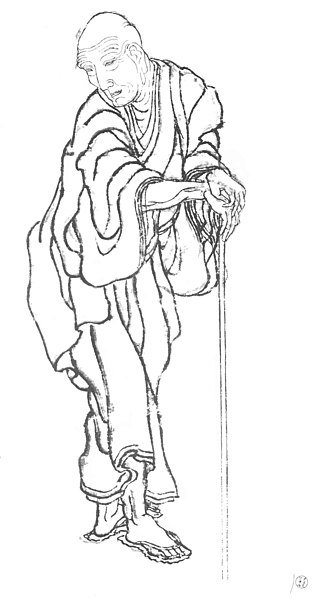Difference between revisions of "Hokusai and Adoption"
(Created page with "{{#eimage: http://upload.wikimedia.org/wikipedia/commons/thumb/d/d4/Hokusai_portrait.jpg/317px-Hokusai_portrait.jpg |410x579px|thumb|'''1839 self-portrait'''<br />Source: Wiki...") |
m (→References) |
||
| (One intermediate revision by the same user not shown) | |||
| Line 12: | Line 12: | ||
==References== | ==References== | ||
| − | WebMuseum, Paris. Hokusai, Katsushika." Available at: | + | WebMuseum, Paris. Hokusai, Katsushika." Available at: www.ibiblio.org/wm/paint/auth/hokusai/ |
| − | "Hokusai Katsushika (1760-1849)." Available at: | + | "Hokusai Katsushika (1760-1849)." Available at: www.csse.monash.edu.au/~jwb/ukiyoe/raf_hokusai_intro.html |
| − | "Hokusai, 1760-1849." Available at: | + | "Hokusai, 1760-1849." Available at: www.artelino.com/articles/hokusai.asp |
[[Category: Adoption Celebrities]] | [[Category: Adoption Celebrities]] | ||
Latest revision as of 17:48, 28 February 2018
Biography
Hokusai's first few years are a mystery, but he was born near Tokyo, and when he was four or five he was adopted by a mirror-polisher named Nakajima Ise. There is speculation that Nakajima was in fact his birth father as well.
He was already drawing by the age of five. By the age of 10 (or 15) he was apprenticed to a woodblock carver. He was in the workshop of Katsukawa Shunsho and Katsukawa's heir until 1792, and then studied with other craftsmen for several more years. He was one of the first Japanese artists to be influenced by Western art, especially Dutch landscapes.
For the rest of his long life he was a prolific worker, with about 30,000 known paintings and engravings to his name. In middle age he was impoverished when his grandson, whom he had adopted, gambled away his entire fortune, and he was forced to work even harder to stay solvent. It was during this period that he produced his most famous engravings: the Thirty-six Views of Mt. Fuji (1823-29), of which one, "The Great Wave off Kanagawa," is probably the single most famous work of Japanese art in the West. He continued to work until his death at the age of 90.
Hokusai is not well known or highly regarded in Japan, but his work has been highly influential in Europe and America for generations. Most of his work is of the type known as Ukiyo-e, or Floating World, portraying everyday people's lives and also the lives of the idle rich and geishas, produced cheaply for the mass market. He used at least 26 different names as an artist, and his name at birth might have been Tokitaro. One of his painting names was Gakyo-rojin, meaning Old Man Mad with Painting, because he was such an obsessive worker.
Katsushika is the name of the place where he was born, and was one of the names he used.
References
WebMuseum, Paris. Hokusai, Katsushika." Available at: www.ibiblio.org/wm/paint/auth/hokusai/ "Hokusai Katsushika (1760-1849)." Available at: www.csse.monash.edu.au/~jwb/ukiyoe/raf_hokusai_intro.html "Hokusai, 1760-1849." Available at: www.artelino.com/articles/hokusai.asp
